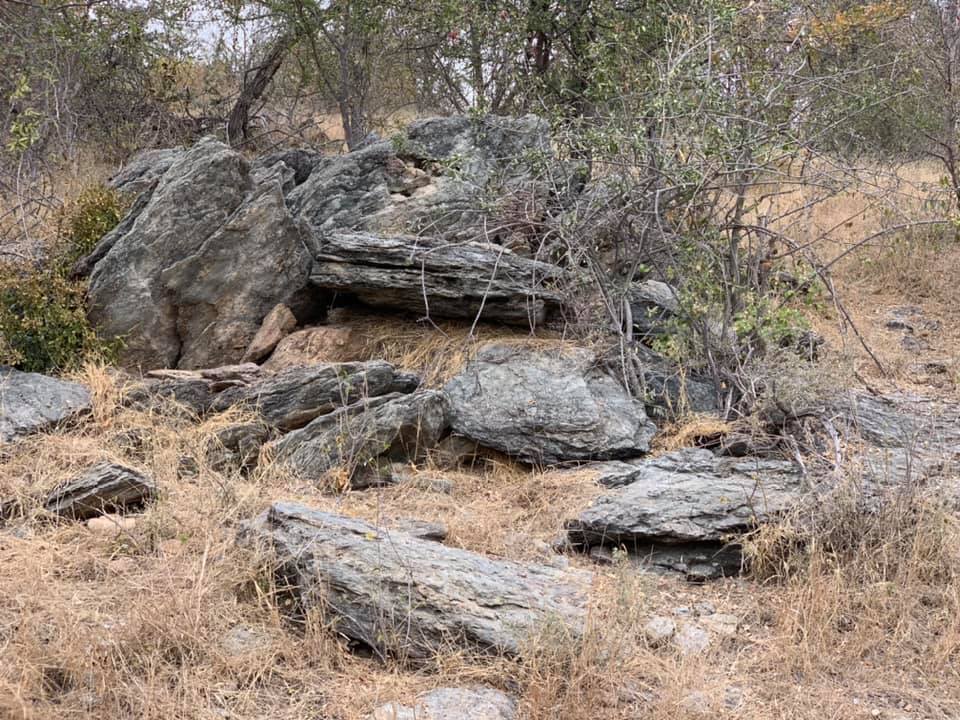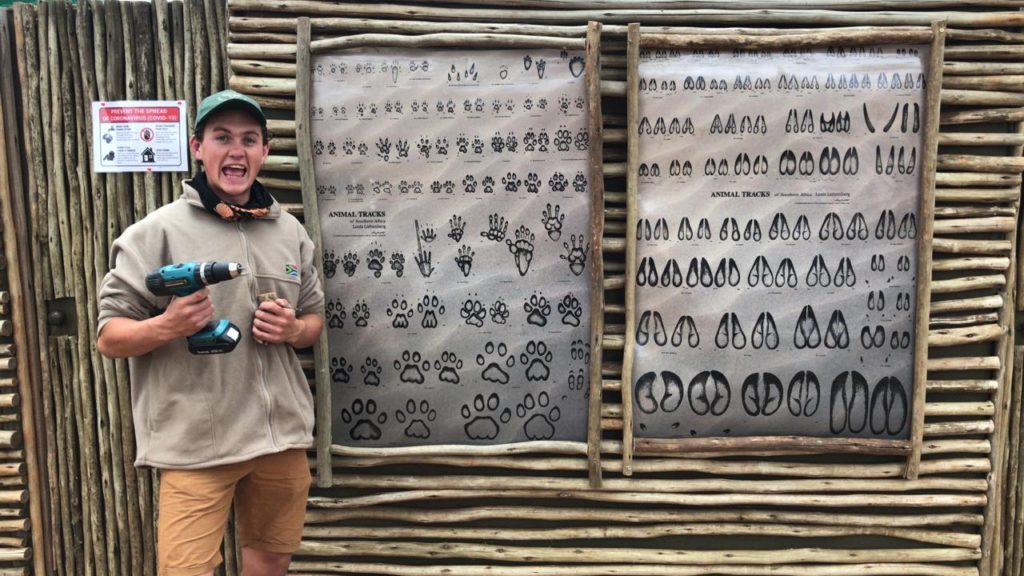
The veld here in South Africa is still recovering from many years of drought. As a result, the animals are becoming more abundant. More and more, we are seeing these dry, grassy nests, and they aren’t always in rocks. Sometimes, they are in hollows in dead (or still living) trees. We identify them by the long dead grasses that have been stuffed into the openings, presumably as insulation.
These are mammal tracks and signs, or, rodent tracks and signs, to be more specific.
This is the nest of the Namaqua rock mouse. They live in colonies and a characteristic of its communal shelters are the large accumulations of dry grass and other plant material dragged into the entrances.
Featured Item from our Tracker Mentoring shop:
Phil (our apprentice guide) looks pretty excited about our new posters!

South African Tracker, Nicholas Knott-Craig took all of Louis Liebenberg’s sketches of padded-foot and hoofed animals from his groundbreaking book, A Field Guide to the Animal Tracks of Southern Africa, and made them life-sized. Then, he put them all side-by-side in a laminated, A0, poster.
We will be selling these in the Tracker Mentoring shop, in about a week’s time. After we figure out what it costs to reliably produce and ship them here in South Africa. We’ll be adding on a little something extra, but not to make a profit. Proceeds will go directly to Louis Liebenberg, the developer of CyberTracker and the Tracker Certification System for his Master Tracker Fund.
Louis has done more than any other human alive to preserve and promote the art and science of wildlife tracking. Every year, he spends a significant amount of time working in remote places with marginalized indigenous people. He identifies people who retain these old skills, and finds ways to give them pride and even employment for what they know. He encourages them to refine their skills, and to be able to teach it to the younger generations in their communities. These people are the next Master Trackers – trackers who have demonstrated skill and who have also contributed significantly to the field of tracking through mentorship, and perhaps evaluation of others.
We’re pretty excited, too, Phil!
Other articles you may find interesting
- Scrub Hare Urine, South Africa
- Zebra (zeh-brah, not zee-brah) tracks, South Africa
- Introducing Tracker Mentoring! (And, introducing the tracks of the Crested Barbet!)